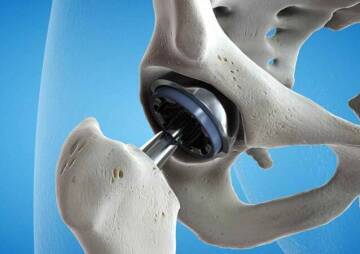-
Category
Craniomaxillofacial Surgery
Orthopedic Surgery
Spine Surgery
Orthopedic Implants
Hip Surgery
Knee Surgery
Pectus Excavatum
Bone Graft
Disinfectants
Healthcare
Risks of Cervical Spine Surgery Complications

With all surgical procedures, there are a number of complications. When surgery is undergone near the spinal cord and spine area, risks of complications can be more important and serious.
With all surgical procedures, there are a number of complications. When surgery is undergone near the spinal cord and spine area, risks of complications can be more important and serious. Cervical spine surgery is a kind of surgery that could carry several risks. However cervical spine surgery complications are rare, but they can be serious.
Nobody would like to have cervical spine surgery and almost around 80% of neck problems can be managed through nonsurgical treatments, but for a few cases with long-term neck, pain surgery might be necessary.
This article is aimed to take a closer look at cervical spine surgery risks, types of surgery for neck, neck surgery complications, and all you need to know about the cervical spine.
Cervical Spine Meaning
The neck, also called the cervical spine, is a long flexible column extended through most of the body. The top part of the cervical spine is connected to the skull, and the bottom of the cervical spine is connected to the upper back at the shoulder level. This area is generally known as the backbone or spinal column. The cervical spine or neck region is composed of muscles, nerves, ligaments, and tendons seven stacked bones which are divided from one another by intervertebral discs, by these discs the spine is allowed to move freely.
However the cervical spine is a small area but it is one of the most complicated regions and plays several important roles in the human body such as protection of the spinal cord, supporting the movement of the head, and facilitating the flow of blood into the brain.
What Is Cervical Spine Surgery?
Cervical spine surgery is usually indicated for different types of spinal neck problems. Neurosurgeons or orthopedic surgeons recommend cervical spine surgery in order to relieve long term neck pain, stop unusual motion in the head, weakness and tingling, numbness, and restore full nerve function.
The surgery is generally undergone when the spinal cord or coming nerves from the spine are under tremendous pressure due to trauma, instability, or degenerative disorders. for degenerative disorders, trauma, or instability.
Surgical Approaches to the Cervical Spine
The cervical spine could be approached from the front called "anterior approach" or from the back called "posterior approach". In most cases, if both approaches are possible, surgeons prefer the anterior approach to the cervical spine. Anterior approach has less disruption and also is easier for surgeons to maintain the normal alliance of the spine. There are some cases that only require a posterior approach or even a few cases require a combination of anterior and posterior approach.
Types of Surgery For Neck
There are several types of surgery for neck, here is some common neck surgery:
Anterior Cervical Discectomy and Fusion (ACDF)
Anterior cervical discectomy and fusion (ACDF) is a neck surgery that removes a damaged or degenerative disc in the neck. The surgery is composed of two parts.
Firstly, the ACDF approaches from the front, then the damaged disc is removed from vertebral bones.
This phase is called anterior cervical discectomy.
Secondly, at the same time as the discectomy, fusion surgery is done. A fusion surgery includes placing implants or bone grafts where the original disc was so as to strengthen the area and provide stability.
This second phase is called fusion.
Anterior cervical discectomy and fusion is generally done with the anterior approach, this means that the surgery is undergone through the front part of the neck. The front approach allows surgeons to have a direct view of the cervical disc and they have complete access to the entire cervical spine.
This approach has less postoperative pain for patients. Surgeons prefer the front approach because it provides an uncomplicated pathway to the spine. After the surgery, patients feel less incisional pain from this approach than from the posterior approach.
Anterior Cervical Corpectomy Spine Surgery
Anterior cervical corpectomy is a surgical procedure in which the surgeon removes vertebral bone or intervertebral disc. Vertebral bone is one or more bones in the neck. This surgery is generally recommended by surgeons when there is compression on the spinal cord behind vertebral bodies. The surgeon typically removes any bone or disc that is compressing on the spinal cord to ease the pressure on the spinal nerves or spinal cord.
As well as anterior cervical discectomy and fusion, the second step is fusion surgery in order to stabilize the spine. The surgeon places an implant inside the area such as palate or other related instruments to make the spine steady.
As the name of the surgery declares, the surgical approach is from the front of the neck. Some individual cases also need surgery in the back of the neck, called posterior cervical fusion, this surgery is usually done during the same hospitalization.
Posterior Cervical Laminectomy and Fusion
Laminectomy means to remove the lamina. The lamina is a very thin plate of bone at the back of the neck which makes the roof of the spine and protects the spinal cord.
The goal of this surgery is to remove the lamina to give more room to the spinal cord.
The procedure for a posterior cervical laminectomy includes the following:
Surgical approach;
There will be skin incision in the midline of the back of the neck and is about 3 to 4 inches long.
Removal of the lamina;
A high-speed burr could be utilized to make a trough in the lamina on both sides just before it joins the facet joint.
The lamina as with the spinous process is removed as one piece.
The removal of the lamina and spinous process allows the spinal cord to slide backward and gives more room.
Cervical Spine Surgery Complications
No surgery is without risks and there is the risk of complications through any surgery but when the surgery is undergone near the spine and spinal cord, these complications are very serious.
General complications of most surgery include infection, bleeding, blood clots, and anesthesia risks.
Some patients might need several additional surgeries, after spine surgery. A list of some common complications are provided here:
Anesthesia Complications
Nearly all surgical procedures need some types of anesthesia before the surgery. Anesthesia is so that the patient doesn't feel the procedure. The simplest form of anesthesia which is usually done for simple surgery is local anesthesia, and the most complex form is general anesthesia. Through general anesthesia patients completely go to sleep during the surgical procedure. Some medications are given to patients to put them to sleep.
As the spine surgery is a complex surgery, it requires general anesthesia. A very small number of patients have some problems with general anesthesia due to the used drugs.
Thrombophlebitis
When blood clots form inside the veins of the legs, it is called, Deep Venous Thrombosis (DVT).
This is a common problem in many surgical procedures.
The risk of thrombophlebitis (DVT) is much higher during operation including the pelvis, and operation including the lower extremities. There are several reasons that the risk of DVT gets higher after surgery. One of the reasons is, the body tries to stop the bleeding related to the surgery, and the body's clotting mechanism is hyperactive during this period of time. Secondly, injury to blood vessels around the surgical area, from normal tugging and pulling in the surgery, can set off the clotting procedure. Finally, blood that does not move properly sits in the veins and gets stagnant. Blood that sits long in one spot typically begins to clot.
Bone Graft Migration
In rare cases, the bone graft could move from the right position between the vertebral bones very soon after surgery. This is more probable to happen when plates or screws are not used or if multiple vertebral levels are fused. If this problem occurs, patients need additional surgery
Nerve Damage or Persistent Pain
In any spine surgery, there is the risk of damaging the nerves or spinal cord. Damage in nerves or spinal cord could result in numbness or even paralysis. The most common reason for constant pain is nerve damage from the disc herniation. Some disc herniations might permanently damage a nerve making it unresponsive to surgery.
Hardware Fracture
Metal plates and screws utilized to stabilize the spine are named “hardware.” The hardware might break or even move before the bones are fully fused. If this occurs, an additional operation might be necessary to fix or replace the hardware.
Transitional Syndrome
The fusion of the spine causes extra stress and overload to be transferred to the discs and also bones below or above the fusion. The added wear and tear can finally degenerate the adjacent level and cause severe pain.
If you have more questions, please contact us.
Health News Center is always ready to get you informed about what you are eager to know.
References :healthline , spine-health , mayfieldclinic, roushspine, spinemd , stiebermd






